
Welcome to the new year, Amara readers! We are wishing you and your families a happy and healthy 2024.
Speaking of happy and healthy, many of us set fitness and wellness goals this time of year, and for moms it’s no different, whether you’re a first-time parent or have had children before.
Today, we bring you a run-down on postpartum fitness—why it matters; what are some realistic goals; and fun exercises to do solo, with a friend, or with your baby!
First: what are the benefits of exercise after childbirth?
- It promotes gradual and healthy weight loss after pregnancy.
- Exercise can also help you rebuild abdominal and pelvic muscles that take a particular hit during pregnancy.
- Moving also boosts your daytime energy levels while promoting quality sleep at nighttime.
- And finally, exercise helps you feel like you, reducing the likelihood and/or severity of postpartum depression.
All that said, we at Amara—along with medical experts—don’t recommend running a marathon the day after childbirth. Instead, let’s be realistic and reasonable about postpartum fitness. Some goals and pointers:
If you had an uncomplicated pregnancy and vaginal delivery, it's generally safe to begin light exercise the day (or a few days) after giving birth—or as soon as you feel ready. (Light exercise = walking or kegels; more on that below.) Always consult your healthcare provider first.
If you had a C-section, considerable vaginal tearing and repair, or an otherwise complicated birth, talk to your healthcare provider about when to start exercise. It can take 2-3 weeks for extensive tearing to heal, but your doctor may give you the green light for upper-body exercise and walking as you heal (and to promote healing).
Even with a C-section, many healthcare professionals recommend post-birth walking since that can help with circulation and lower your risk of blood clots.
Aside from walking, though, women who have just had C-sections will likely need to refrain from other (more intense) exercise until about 6 weeks. Your doctor will be able to give you more details.
A few other tips on introducing exercise: consider how you exercised pre-pregnancy and begin your postpartum fitness journey with a less intense version of that. Increase your pace or intensity gradually.
The American College of Obstetricians and Gynecologists (ACOG) recommends mixing aerobic activity (walking, for instance) with strength training. For this, you can use your own body weight (doing exercises like yoga and Pilates) or you can use light weights.
When doing strengthening exercises, aim for 3 sets of 5-10 repetitions, slowly building up to 3 sets of 8-15 repetitions. Use lighter weights initially and focus on increasing the number of repetitions per set (this is a more important goal than trying to use heavier weights).
(Hint: light cardio—like walking in place—is a great way to warm up.)
This is especially important if you’re breastfeeding, as breastmilk is ~90% milk and dehydration can impact milk supply. Experts recommend drinking about 128 ounces—or 16 cups—of water per day if you are breastfeeding.

- Right after birth, avoid high-impact exercises (like High Intensity Interval Training (HIIT)) that require rapid, directional changes.
After pregnancy and childbirth, your joints and ligaments are more pliable and thus prone to injury. Movements like mountain climbers, jumping rope, and jumping jacks—and switching between them quickly as HIIT often requires—are best saved for a month (or a few) into your postpartum fitness journey.
This will be more comfortable for you. Some babies also react differently (negatively) to their mom’s milk post-vigorous exercise (working out can temporarily alter the levels of lactic acid in your milk, changing the taste).
Additionally, if you feel nauseous or start vomiting while exercising, or feel light-headed, stop.
Lastly, if your pelvic area feels … “heavy” or under pressure, or like your organs aren’t supported in your pelvic area, stop exercising. These can be symptoms of pelvic organ prolapse—which is quite common, so don’t panic. The muscles and tissues that support your bladder, uterus, and bowel movements take quite a hit during pregnancy, and sometimes they can descend into the vagina when they become weakened or damaged. Your doctor can prescribe physical therapy and other treatments to help.

Speaking of which….
Fun Ways to Stay Active with Your Baby
Many postpartum exercises can be safely performed with your baby in tow or lying next to you, helping you not only feel better but also giving you two bonding time.
These are especially great for new moms and moms who have *just given birth because they will help your urinary, rectal, vaginal, and abdominal muscles rebuild!
Pelvic tilt. Lie on your back with your knees bent. As you flatten your back against the floor, engage (tighten) your abdominal muscles and slowly bend your pelvis up. Hold for up to 10 seconds. Repeat 5 times, slowly working up to 10-20 repetitions.
Kegels. You can do these anywhere but to include your baby, lie on your back with your infant next to you. Slowly tighten all your pelvic muscles (as if you’re peeing and want to stop urinating midstream). Hold that contraction for a few seconds and then relax. Aim for ~3 sets of 10 repetitions a day, holding your muscles for up to 10 seconds.
ACOG further recommends:
4-point kneeling. Kneel on all fours with your hips directly over your knees and your shoulders directly over your hands. Your back should be straight. Inhale and as you exhale, pull your abdominal muscles in, contracting them. Hold for 5-10 seconds, then relax.
Leg slides: Lie flat on your back, with your knees bent slightly and your feet flat on the floor. Engage your abdominal muscles. Inhale and move one leg to a straight position (you can rest it on the floor or hover it a few inches off the ground). Exhale and bend it back again. Repeat with your other leg.
Knee raises. Lie flat on your back, bending your knees slightly, with your feet flat on the floor. Raise one leg, knee bent, so that it is above your hip. Slide your other leg from a bent position to a straight position, either resting it on the ground or hovering it slightly above the floor. Keep your abdominal muscles engaged as you hold the position for a few seconds. Return to your starting position and repeat with the other leg.
Heel touches. Lie flat on your back, bending your knees slightly, with your feet flat on the floor. Raise both legs, knees bent to 90° above your hips (i.e., your calves should be parallel to the floor). Lower one leg to the floor, keeping your knee bent, and touch your heel to the floor, keeping the knee’s 90° angle. Keep your abdominal muscles engaged as you hold the position for a few seconds. Return to your starting position and repeat with the other leg.
Leg extensions. Start the same as ^^, raising your legs so that your knees are bent 90° above your hips. Extend one leg out so that your foot is 12-24 inches off the floor. Keep your abdominal muscles engaged as you hold the position for a few seconds. Return to your starting position and repeat with the other leg.

Additionally, try these pelvic and abdominal exercises:
Postpartum yoga/stretching poses. These are great because not only do they promote fitness, muscle strengthening, and mental health benefits—but they also relieve tight pelvic muscles which are common after childbirth.
‘Happy baby’ is a great example. Lie on your back and bring your knees toward your chest. Open your knees slightly wider than your hips. Keep your arms on the inside of your knees and use your hands to hold onto the outside of your feet (or ankles). Then, bend your knees so that the bottoms of your feet face upward. Hold for a minute or so, focusing on “breathing into your muscles” and relaxing. Gently pull your feet down to lower your knees toward the surface.
Check out this Parents.com article on five other postpartum yoga poses!
We also like this video from Yoga With Adriene—on pelvic floor poses.
**An important note about abdominal exercises: some moms have diastasis recti (when the left and right abdominals separate during pregnancy, causing the belly to stick out). But even moms who haven’t been diagnosed with this should be cautious with postpartum ab work: those muscles have been pulled, pushed, and stretched over the last 9 months, so ease into it!
*For these, your baby should be older (i.e., not a newborn) and able to at least hold their head up on their own.
Baby sit-ups. Get in position for a sit-up and place your baby on their back against your upper legs. Place (and keep) your hands on your baby for support so they don’t fall. Perform sit-ups. When you come up, you can make eye contact, silly faces, etc. with your little one!
Baby lifts. (Basically, an overhead press with a baby!) Sit on an exercise ball (or lie on the floor) and carefully lift your baby to your head height or slightly higher. Repeat lifting them up and down and, if sitting on the ball, twist from side to side, working different areas of your core.
Tummy time exercises. Join your baby on their blanket/mat for tummy time. As they’re on their stomachs, learning to build their neck muscles, try any of the following:
-Push-ups.
-Planks.
-Leg lifts: Get on your hands and feet with your baby underneath or beside you. Slowly lift your right leg up and hold the position for 10 seconds. Bring it back to the floor/mat. Repeat the exercise with the other leg.
-Glute raises: lie on your back and let your baby rest on your stomach. Bend your knees, with your feet firmly planted on the floor. Slowly lift your butt while contracting those muscles. Bring your buns up so that your upper and lower body are in one continuous line. Lower your hips down to the floor, and repeat.
-Crunches.
One idea with crunches: hold your legs in a tabletop position so the lower half creates a flat surface for your baby to lay on. As you place them on your lower legs (stomach side down), do your crunches. Hold onto your baby at all times.
Another way to do this: lie on your back and bend your knees to 60°. Make sure your feet are flat. Place your baby on your lower abdomen and slowly lift your upper body off the floor, engaging your abdominal muscles. Hold that position for 5-10 seconds. And then go back down slowly as you exhale.
Other postpartum exercises that include your baby:
- Walking.
Many people can start walking soon after delivery. When you first begin, try walking just around your block or for 10 minutes or so. Then, increase that to a few times a day, bringing your baby with you, weather permitting. Slowly build up to a 30- to 45-minute walk with your little one.
Want to run? Some experts recommend waiting until 12 weeks postpartum to try running, but if you’re ready before then and your doctor gives you the green light, start with a short slow-paced run—say, a 20-minute session—and try that no more than 3 times a week for the first few weeks. Gradually build up your time and the number of sessions.
As you walk or jog with your baby, mix in lunges and/or squats as you push the stroller forward.
With older babies that can walk and move around on their own, ask them to shake it with you. For little ones who aren’t yet walking, hold them in your arms while you groove to some (not-too-loud) music. See here for Amara’s post on the benefits of music for you and your baby.
Place your baby in their carrier so that they’re securely attached to you. Then, engage in a series of squats—wide-legged ones, shoulder-width ones, etc. Place a chair (or some piece of sturdy furniture) near you so that if you feel off-balance, you can grab ahold of the furniture. We don’t want anyone falling!
(Just google “mommy and me classes near me”!)

We at Amara are all about postpartum exercise and supporting moms’ health journeys. As a baby and toddler food company, we (obviously) care about babies’ health and development—but we also care about parents. Amara’s baby blends and toddler snacks have no additives, are 100% non-GMO and organic, and are made from only a few—very real, very transparent—ingredients. We want to offer babies—and the moms and dads feeding them—the best of nutrition.
Any exercise or fitness tips to share?
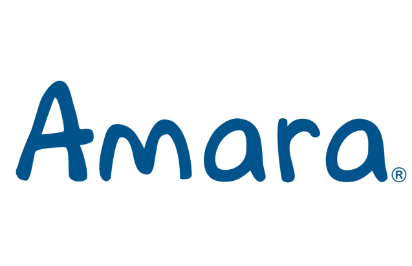



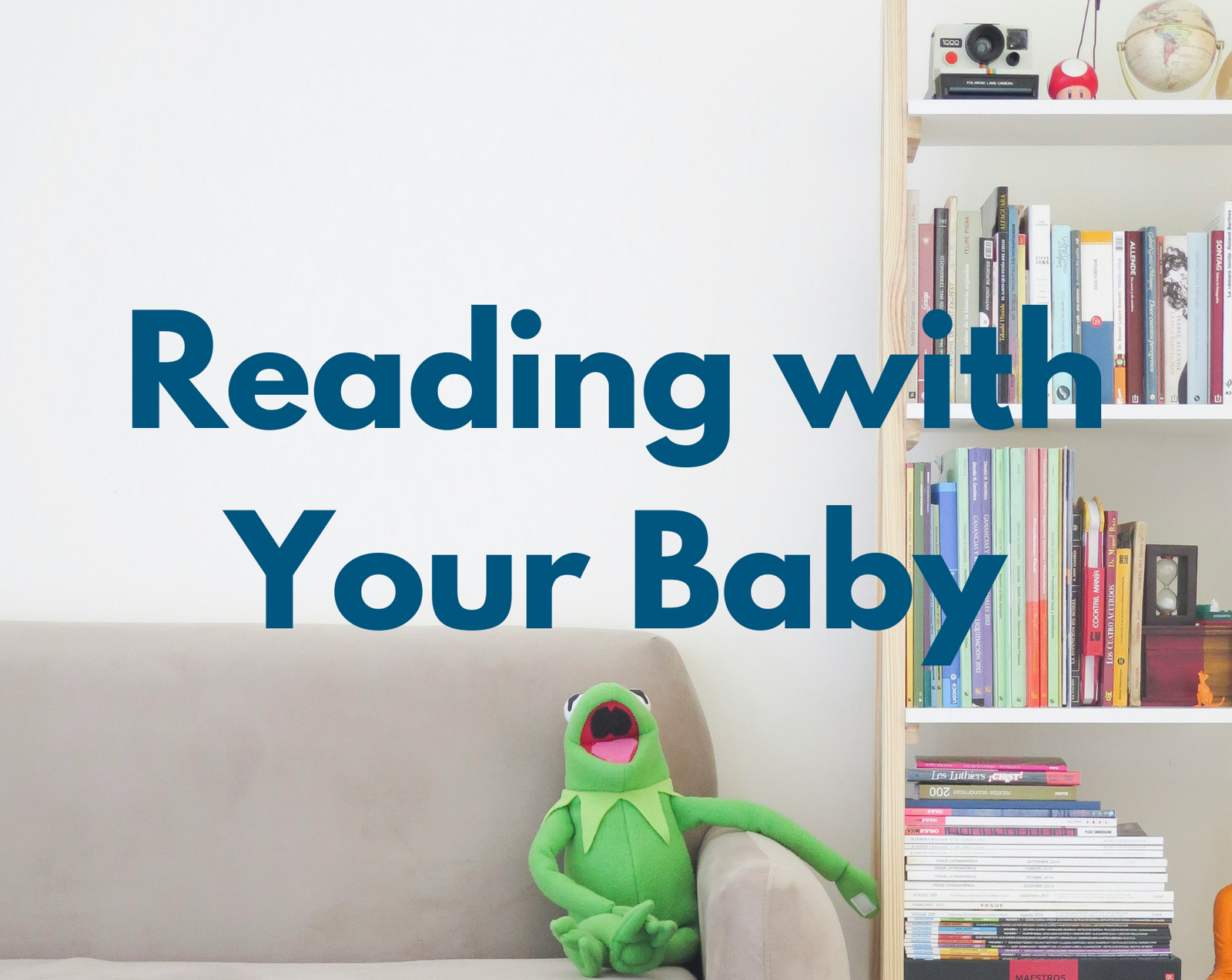
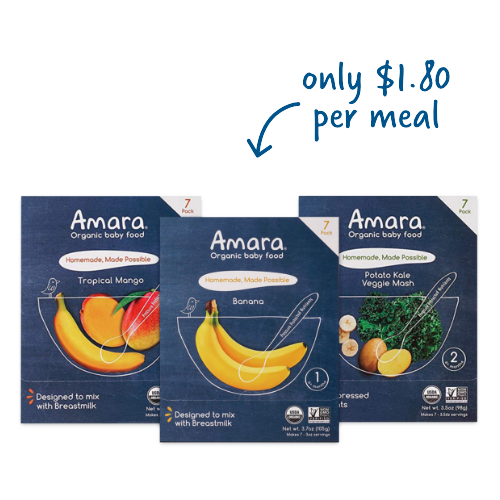
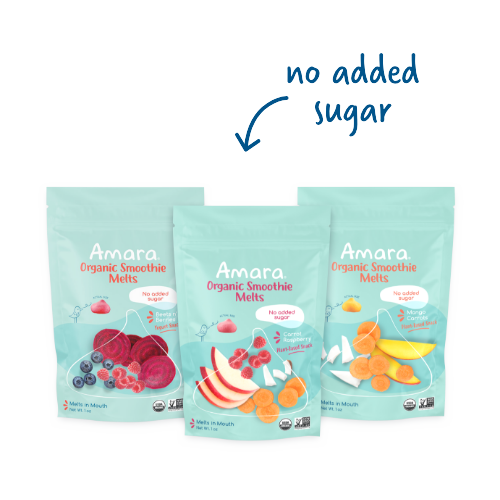
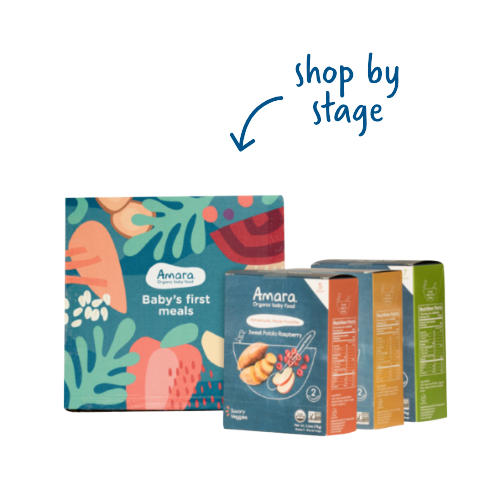
Leave A Comment